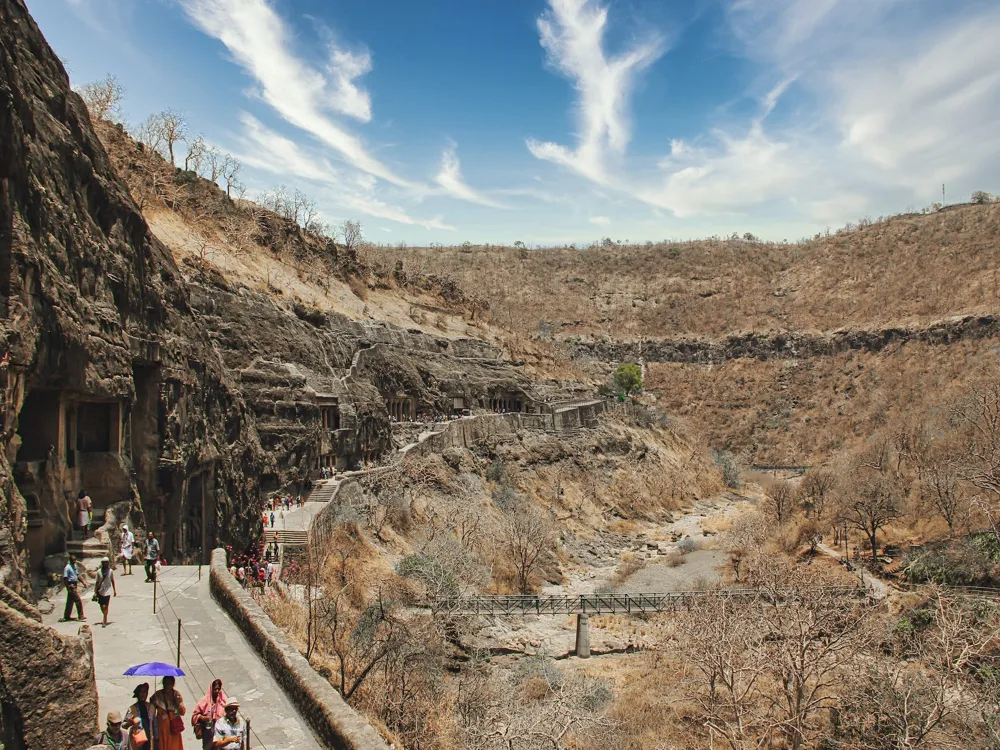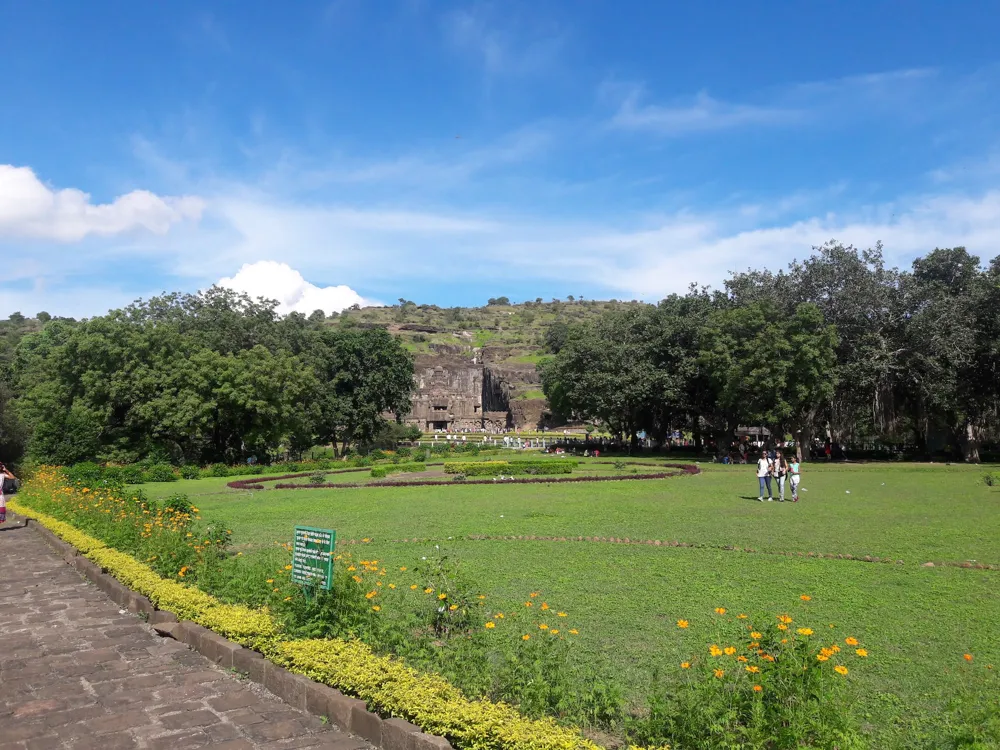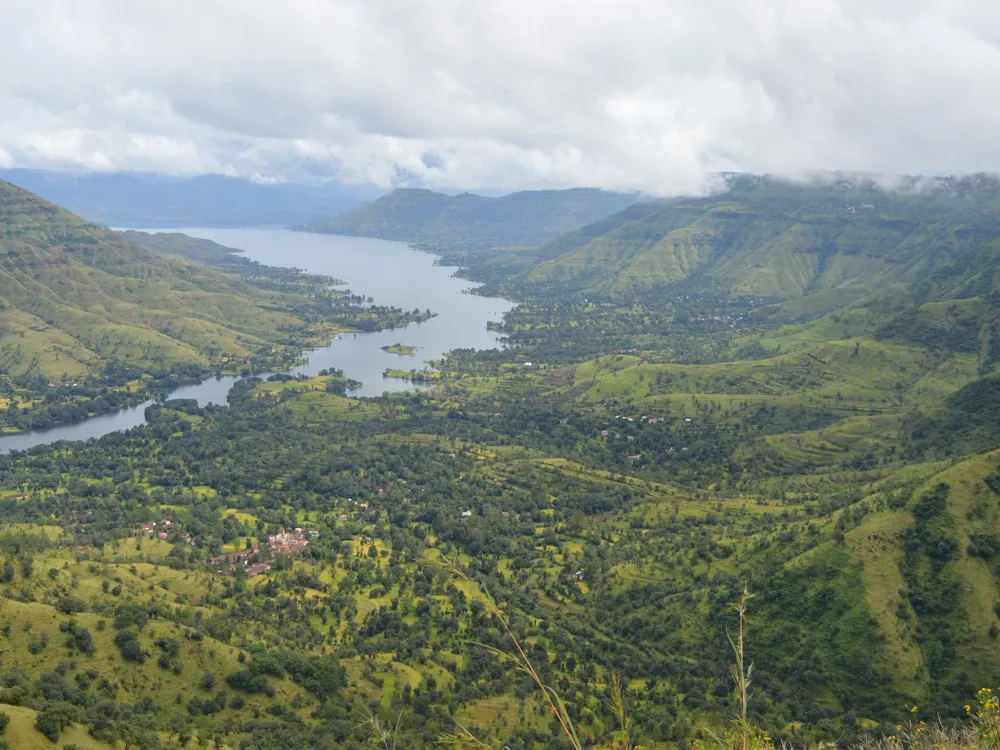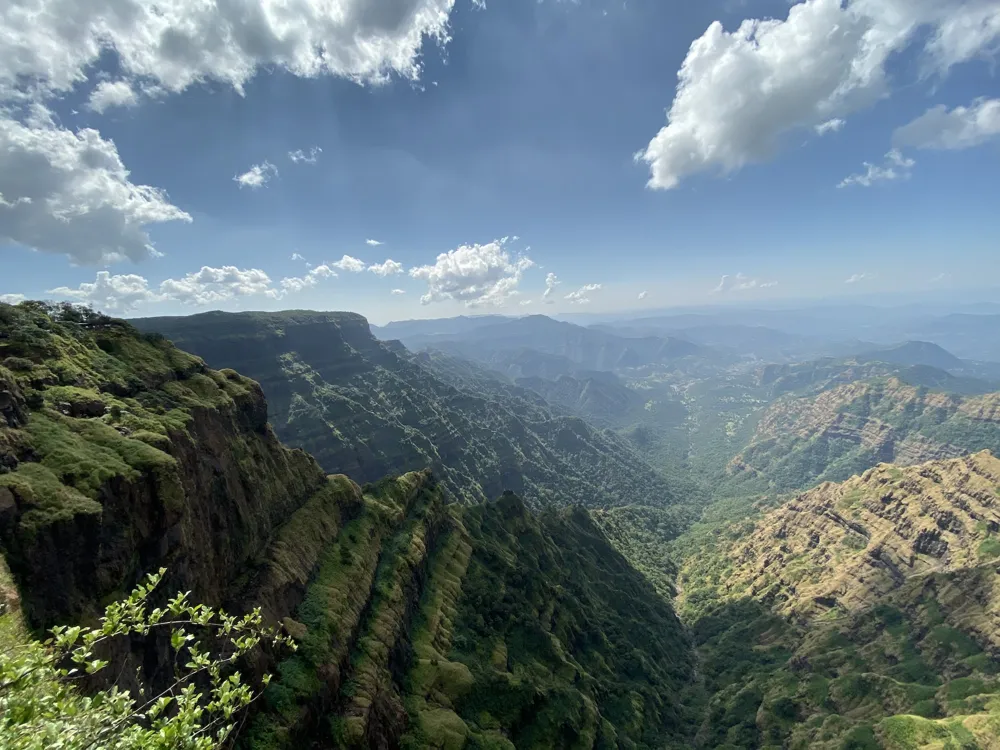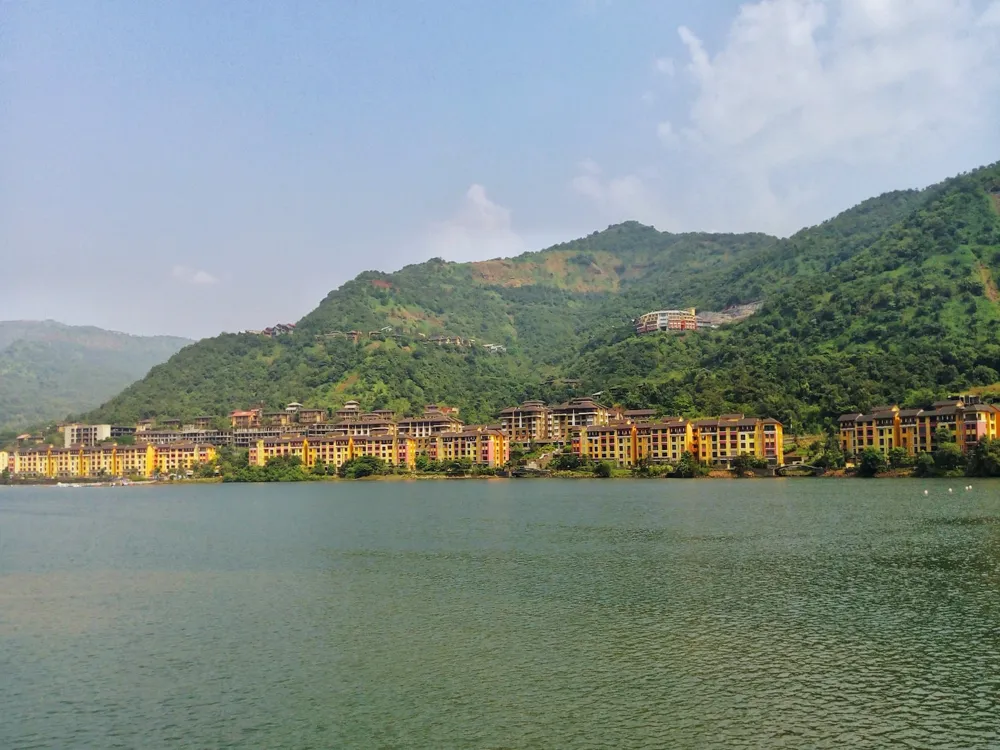Daulatabad Fort, located in Aurangabad, Maharashtra, stands as a remarkable testament to ancient Indian architecture and history. Originally known as Devagiri or 'Hills of Gods', this 14th-century fortress was once the capital of the Tughlaq dynasty. The fort's strategic position and massive fortifications reflect its historical importance. Built on a 200-meter-high conical hill, the fort dominates the landscape and offers a panoramic view of the surrounding area. Its complex series of defenses, including double and even triple rows of massive walls, were designed to confound and demoralize attackers. Historically, Daulatabad Fort has witnessed several sieges and changes in rulership, transitioning through the hands of the Yadavas, the Khiljis, the Tughlaqs, and eventually the Mughals. The fort's architecture is a blend of these various influences, combining the robustness of military fortifications with elements of aesthetic beauty. It is also home to several notable structures, including the Chand Minar, the Chini Mahal, and the Baradari, which add to its historic and architectural significance. The architectural brilliance of Daulatabad Fort lies in its strategic planning and construction, which made it one of the most powerful forts of the medieval period. The fort's main structure is built on a pyramid-shaped hill, surrounded by steep slopes on all sides, making it difficult to ascend. The walls of the fort are solid and imposing, punctuated by bastions that were used for defense purposes. The fortifications include a series of moats, some of which were filled with water, and intricate labyrinths designed to confuse the enemy. One of the most unique features of Daulatabad Fort is its subterranean passage which is pitch dark and curved in a zigzag fashion. This was designed to disorient attackers and defend the fort effectively. The Chand Minar, a 30-meter-high tower inside the fort, is an exquisite example of Islamic architecture, adorned with Persian glazed tiles. The Chini Mahal, or the 'Palace of Tiles', is another significant structure known for its ornate tile work, reflecting the Indo-Islamic architectural style. The ideal time to visit Daulatabad Fort is from October to March when the weather is pleasant. Summers in Aurangabad can be quite hot, making it challenging to explore the fort comfortably. As the fort requires a good amount of walking, often on uneven terrain, wearing comfortable and sturdy footwear is advisable. There are limited facilities for food and water inside the fort, so it's recommended to carry your own, especially during the hotter months. Daulatabad Fort is well-connected by road and is approximately 16 kilometers from Aurangabad city. Visitors can easily reach the fort by bus, taxi, or private vehicle. The nearest airport is Aurangabad Airport, and the city is also well connected by train to major cities in India. READ MORE:Overview of Daulatabad Fort, Aurangabad, Maharashtra
Architecture of Daulatabad Fort
Tips When Visiting Daulatabad Fort
Best Time to Visit
Wear Comfortable Footwear
Carry Water and Snacks
How To Reach Daulatabad Fort
Daulatabad Fort
Aurangabad
Maharashtra Goa
NaN onwards
View aurangabad Packages
Weather :
Label : Must Visit
Tags : Forts & Palaces
Timings : 9:00 AM - 6:00 PM
Time Required : 1-2 hrs
Entry Fee : Indian National: INR 10,
Foreigner: INR 100
Planning a Trip? Ask Your Question
Also Refered As:
Devgiri Fort
Aurangabad Travel Packages
View All Packages For Aurangabad
Top Hotel Collections for Aurangabad

Private Pool

Luxury Hotels

5-Star Hotels

Pet Friendly
Top Hotels Near Aurangabad
Other Top Ranking Places In Aurangabad
View All Places To Visit In aurangabad
View aurangabad Packages
Weather :
Label : Must Visit
Tags : Forts & Palaces
Timings : 9:00 AM - 6:00 PM
Time Required : 1-2 hrs
Entry Fee : Indian National: INR 10,
Foreigner: INR 100
Planning a Trip? Ask Your Question
Also Refered As:
Devgiri Fort
Aurangabad Travel Packages
View All Packages For Aurangabad
Top Hotel Collections for Aurangabad

Private Pool

Luxury Hotels

5-Star Hotels

Pet Friendly







